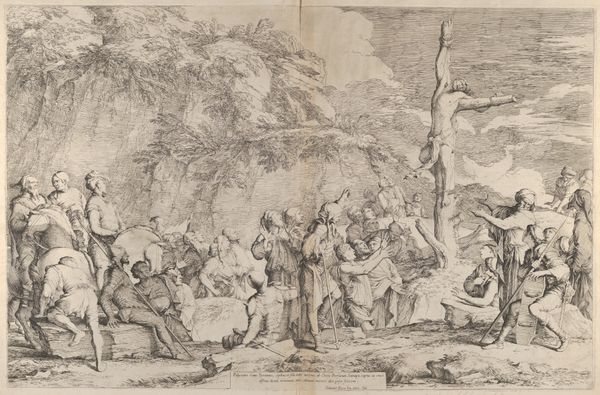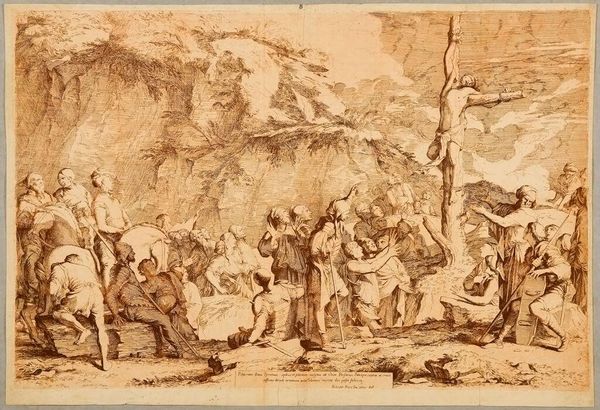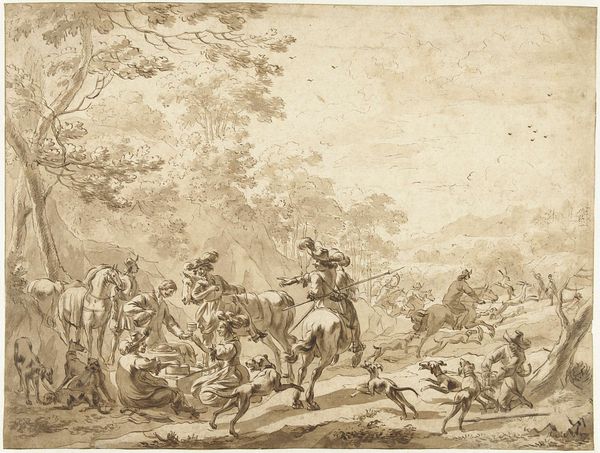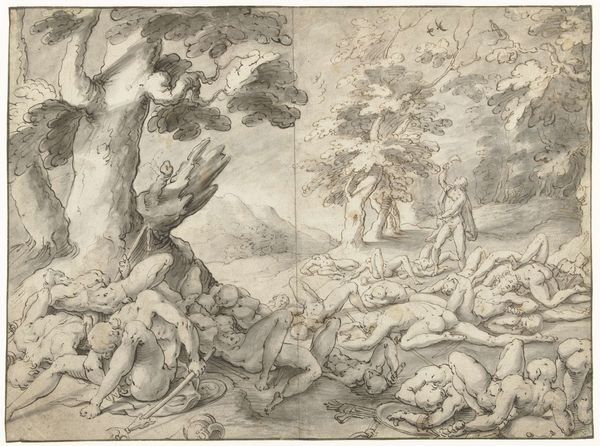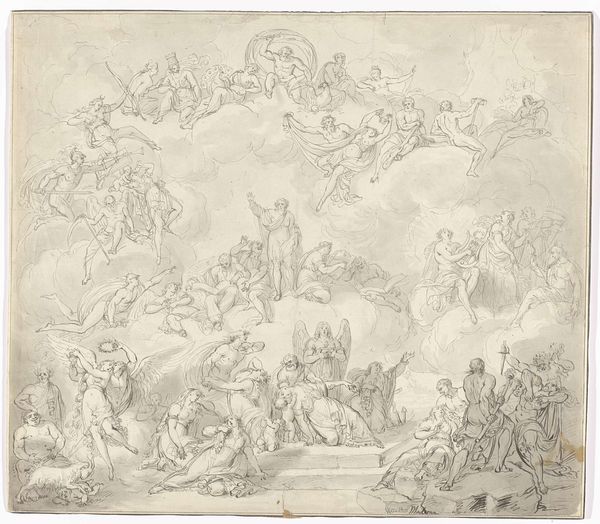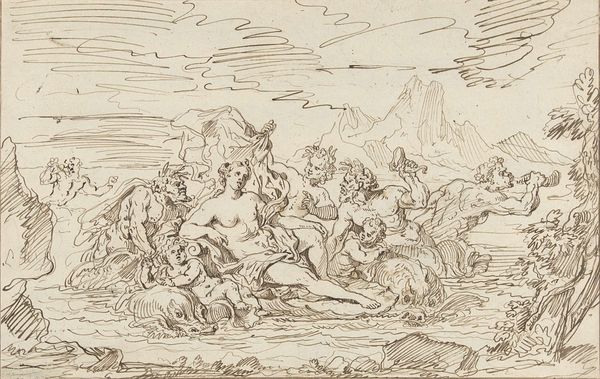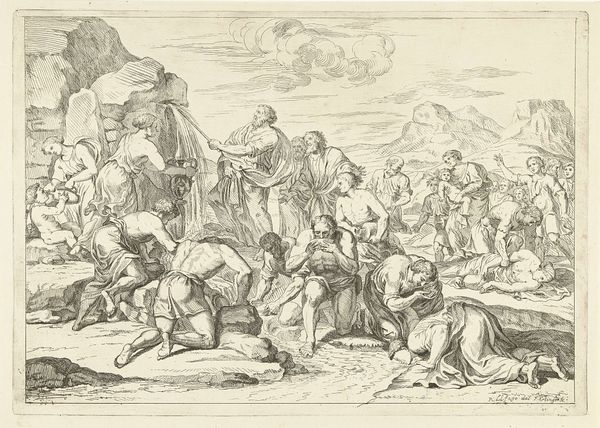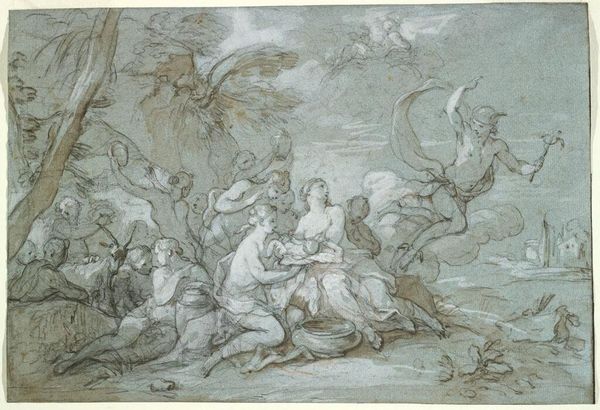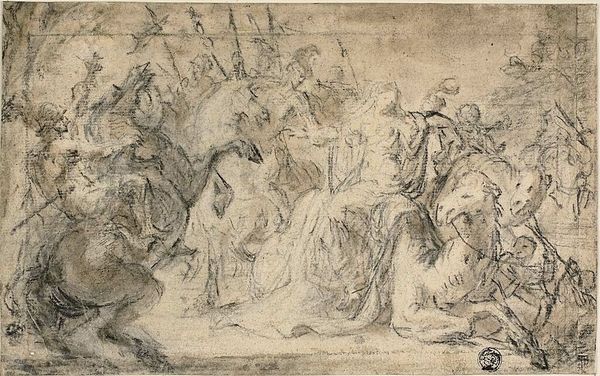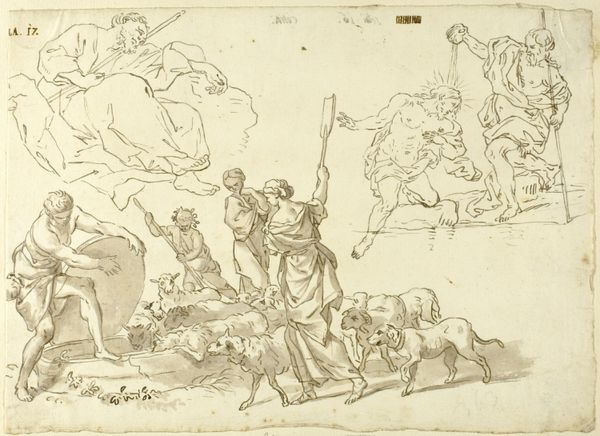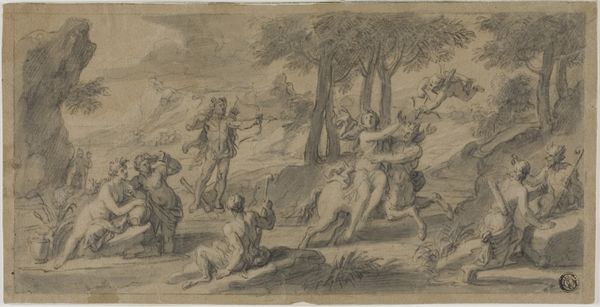
Copyright: CC0 1.0
Curator: Salvator Rosa's "Crucifixion of Polycrates," currently residing at the Harvard Art Museums, immediately strikes one as bleak. Editor: The etching technique itself amplifies that feeling—look at the density of lines, almost suffocating the scene. What materials did he even use to achieve such intensity? Curator: Rosa was known for his mastery of etching; the plate was likely copper, allowing for fine lines and deep contrasts. The scene reflects the story of Polycrates, a tyrant whose good fortune was 'balanced' by crucifixion. This was a popular subject portraying the politics of wealth. Editor: Politics indeed. The very act of creating such a detailed print meant it could be widely distributed, shaping opinions, even inciting action. Curator: Absolutely. And consider the labor involved. It's not just Rosa's hand we see, but also that of the printer, the distributors, the very system that allowed this image to circulate and impact society. Editor: It certainly makes one consider how easily images become tools within political discourse. Thank you. Curator: A sobering but crucial point.
Comments
No comments
Be the first to comment and join the conversation on the ultimate creative platform.
